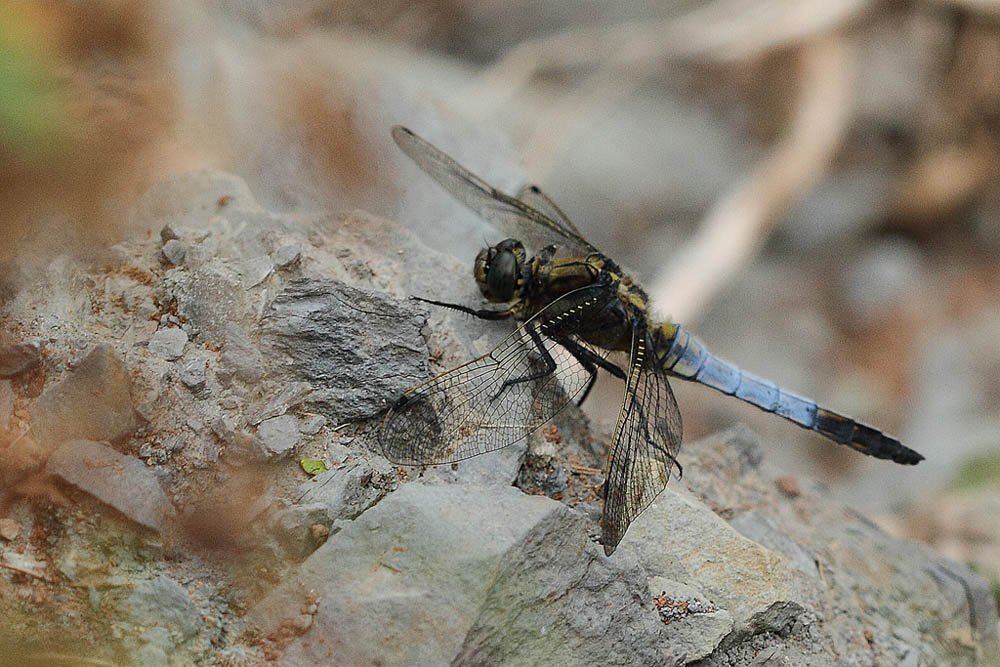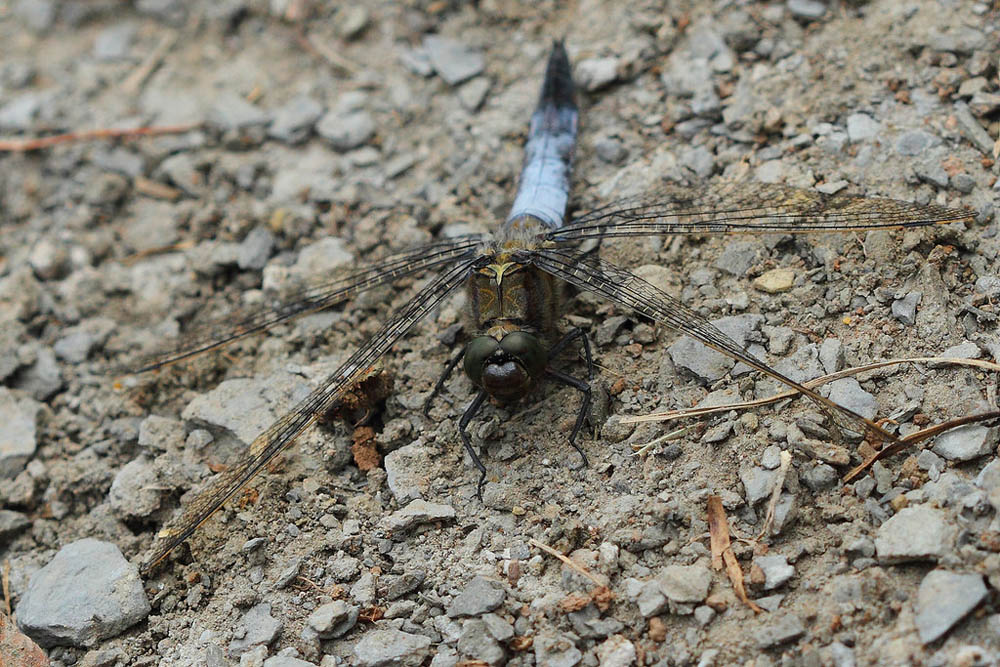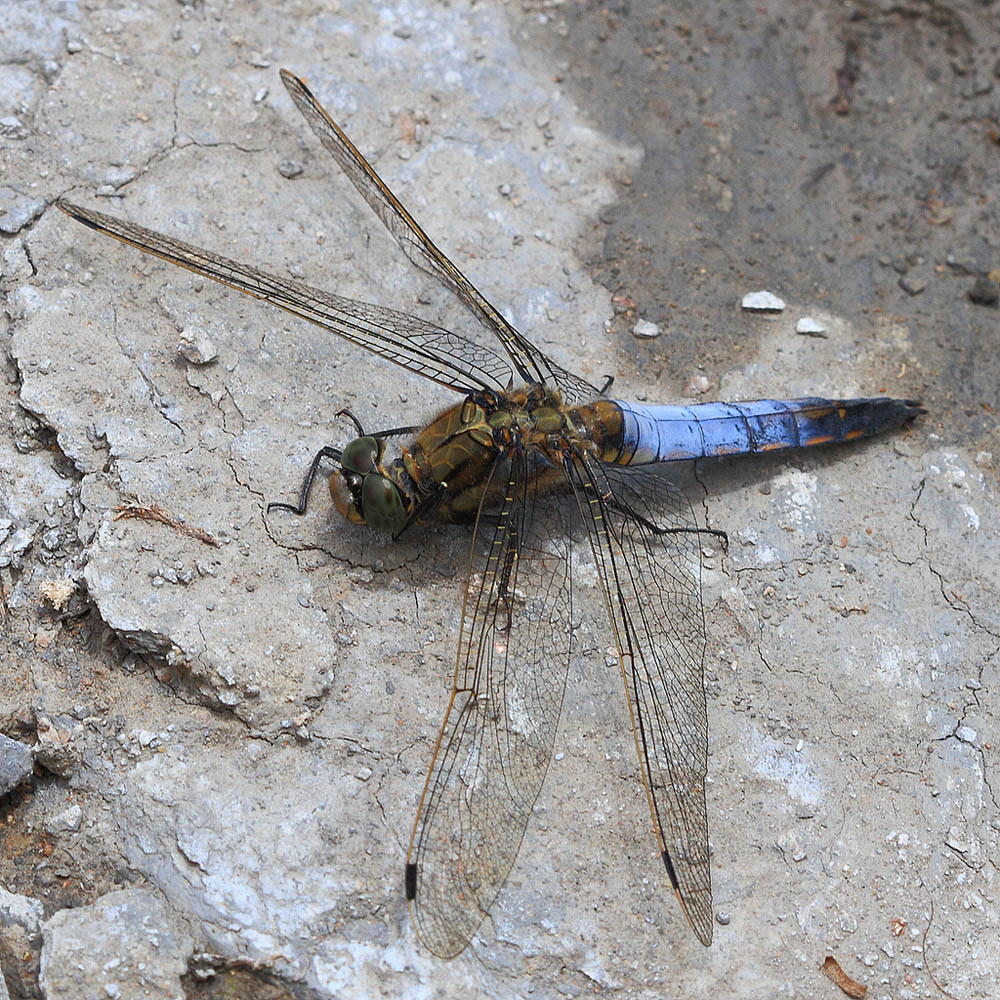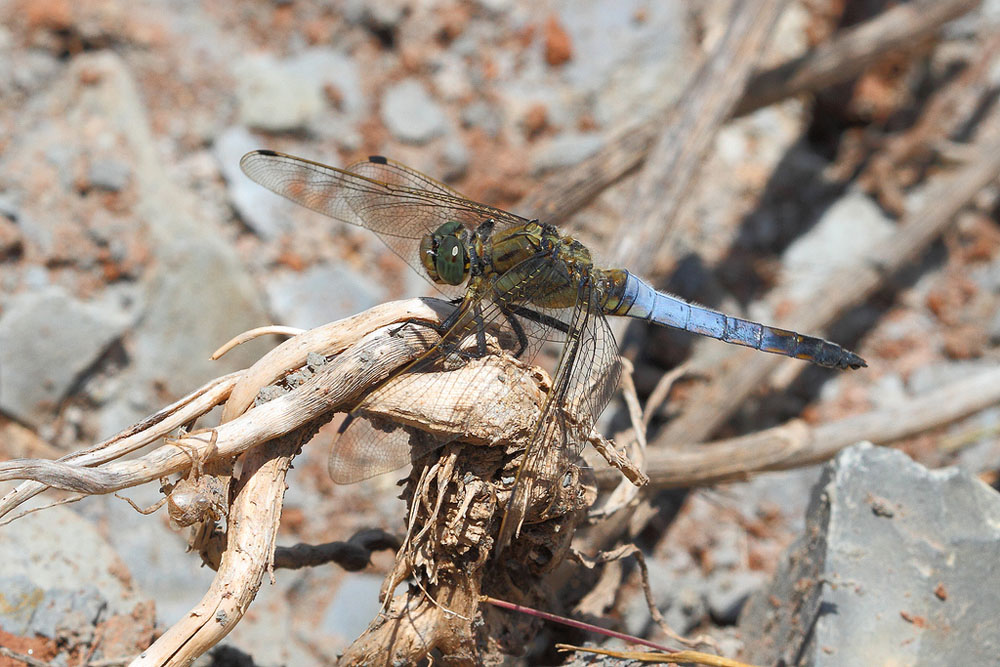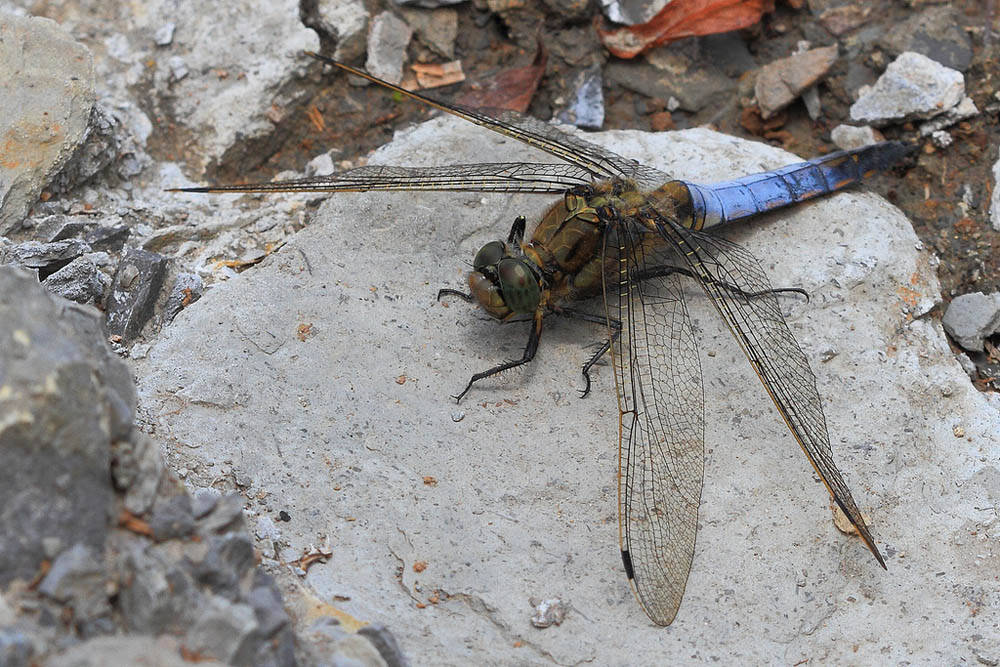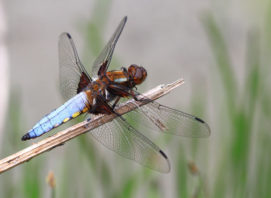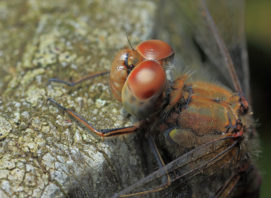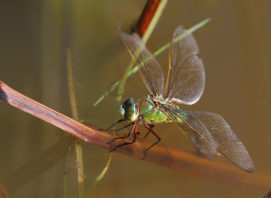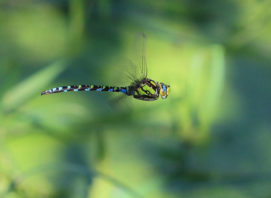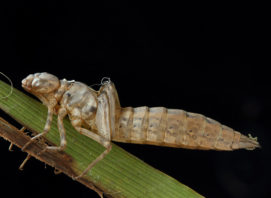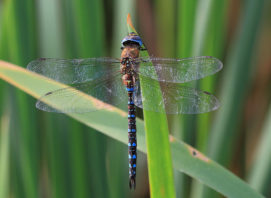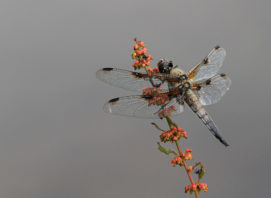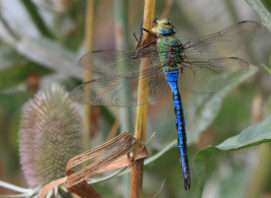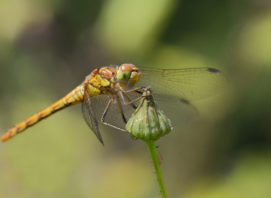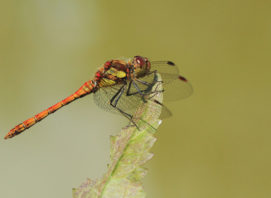Black-tailed Skimmer
The black-tailed skimmer is a medium-sized, straight-sided, fairly narrow-bodied dragonfly. It is on the wing from the end of May to August and is commonly found in flooded gravel pits and reservoirs, where it flies low over the water before landing on the bare shore to rest in the sun. The larvae of black-tailed skimmers can take two to three years to mature. Once they emerge from the water, they may travel some distance over land to find a suitable site to undergo metamorphosis. After mating, mature females lay their eggs by hovering over the water, dipping the tip of their abdomen in and dropping their eggs on to vegetation below the surface.
The male black-tailed skimmer has a grey thorax and a powder-blue abdomen with yellow spots along the sides and a black tip. The female is yellowy-brown with two black stripes running the length of the body. There are several medium-sized, pale blue dragonflies that can be confused. This species can be distinguished from the others by its narrow abdomen with black tip and yellow spots along the side. Its behaviour, flying low over bare gravel and mud, is also characteristic.
Behaviour: Characteristically perches horizontally on exposed surfaces, such as bare soil and mud, stones, gravel and dead wood. Males protect territories agressively from exposed perches, frequently flying low over the water. Mating is in flight over water takes barely 30 seconds, otherwise it can last for up to 15 minutes. The eggs are laid while in flight by dipping the tip of the abdomen into water, with the male hovering nearby.
Breeding habitat: Favours lowland lakes, ponds, sand, gravel, clay and peat workings, large drains and slow-flowing rivers with at least partially exposed margins. It occurs in brackish water and tolerates high fish densities, It is a good colonist of new sites, especially while open ground persists.
Observational Tips: The flight over water is rapid, just skimming the surface, and jinking characteristically from side to side, with wings raised slightly in a shallow ‘V’.
Extract from, Britain’s Dragonflies, Dave Smallshire & Andy Swash, WildGuides

